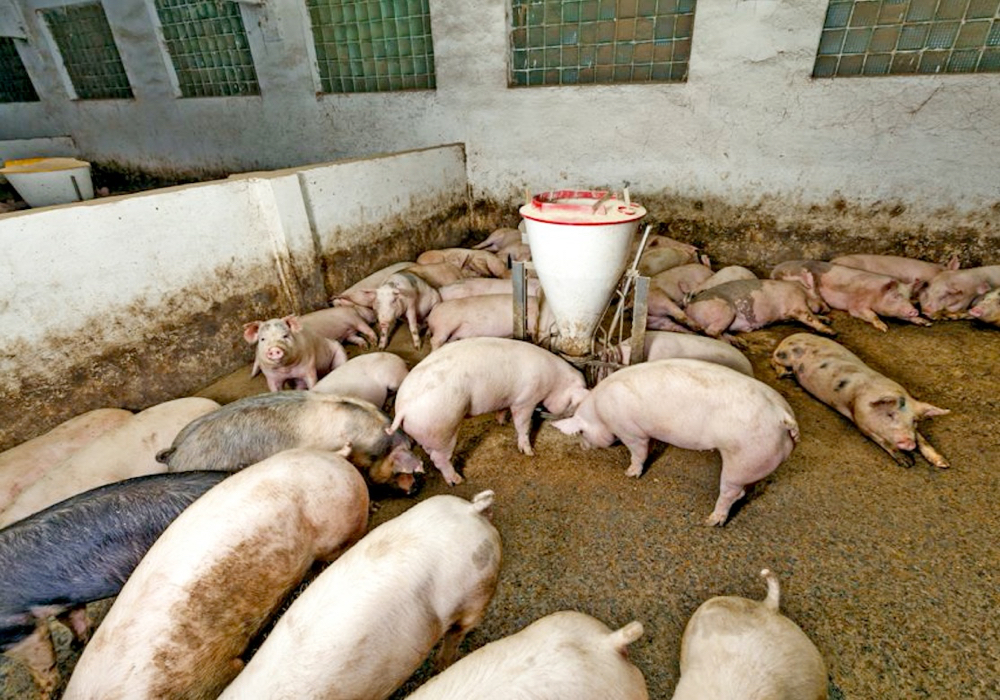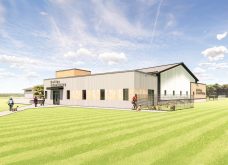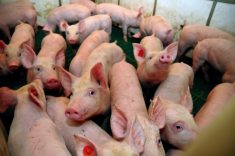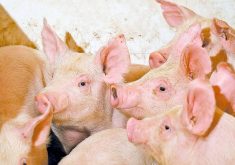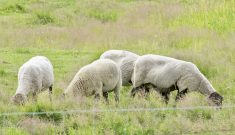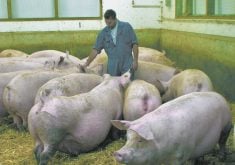Glacier FarmMedia – Pig producers in Canada may have another nine years to convert their barns to group sow housing.
A report from the National Farm Animal Care Council (NFACC) on the codes of practice for raising pigs in Canada has recommended pushing back the deadline from 2024 to 2029.
A five-year review of the pig code, published in August, says not all producers will be able to convert to open sow housing by 2024. Therefore, the panelists on the review are recommending that the code be amended to: “As of July 1, 2029, mated gilts and sows must be housed in groups or individual pens.”
Read Also

Ontario’s agri-food sector sets sights on future with Agri-Food 2050 initiative
The first-ever Agri Food 2050, a one-day industry event dedicated to envisioning the future of food and farming in Ontario,…
The NFACC, which develops the code of practice for livestock care, set a deadline in 2014 for no sow-stalls on Canadian farms by 2024. On many hog farms sows are kept in individual stalls when they are pregnant because the females can be aggressive to one another. Animal welfare groups have argued that sow stalls are inhumane because the sows cannot turn around or express natural behaviours.
A technical panel representing hog producers, veterinarians, swine welfare specialists, advocates for the humane treatment of animals and Agriculture and Agri-Food Canada led the review of the pig code.
It decided the 2024 date was unfeasible for a number of reasons.
“It requires a significant amount of financing, the implementation of a new production system and, potentially, of new breeding stock,” panelists wrote in the report.
“Given the complexity of the conversion process, not all producers will be able to convert prior to the 2024 deadline that was established as part of the … 2014 code of practice.”
The report authors said a lack of money to retrofit or build new barns is a significant challenge.
They estimated it costs $500 to $3,500 per sow space, depending on if it’s a barn conversion or a brand new build. And it isn’t easy to get a loan.
“The difficulty in obtaining financing required to transition to group housing also poses a barrier to meeting the current requirements,” the report said.
“In addition to higher costs, there are also a series of revenue related factors that make it difficult to secure bank financing, given the current economic climate in the industry.”
The economics of hog production aren’t great right now. This summer, some producers said they were losing $30 to $50 on every pig.
The price of pigs in Canada is based on the America price, which is weak because of an oversupply of pigs south of the border. In Canada, though, pork processors actually need more pigs to supply strong demand in Asia and other markets.
Provincial pork associations have been meeting with Maple Leaf Foods and other buyers of pork to revise the pricing system. Ontario is a more complex situation as Maple Leaf isn’t a large player and the second largest processor is a producer co-operative, Conestoga Meats, which pays its members differently than other processors.
Talks are continuing to change the pricing arrangement so producers receive a greater share of the value of a pork carcass.
Until that issue is resolved and producers get some pricing certainty, a 60-year-old hog farmer in Canada is unlikely to invest millions in a new barn with open sow housing.
Despite those challenges, the Canadian Pork Council has estimated that more than 60 per cent of barns will be stall-free by 2024, the NFACC report said.
Animal welfare groups are disappointed with the deadline extension to 2029, but some are pleased by the pork industry’s efforts to eliminate sow stalls.
“We recognize the complexities and challenges involved in moving from stall housing to group housing, not the least of which is the cost associated with refurbishing and renovating barns,” said Lynn Kavanagh, farming campaign manager with World Animal Protection.
“We are encouraged by the fact that one-third of the industry has already adopted group housing for mother pigs.”
The NFACC report says 384,000 of Canada’s 1.25 million sows were kept in group housing as of 2019. Those figures are Canadian Pork Council estimates.
This article was originally published at The Western Producer.



